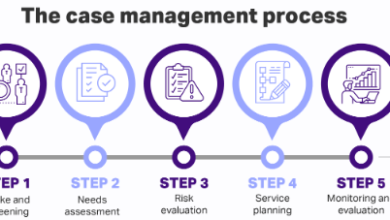
How Air Motors Extend the Lifespan of Cordless Impact Wrenches in Hybrid Systems
Cordless impact wrenches serve as workhorses in many assembly tasks. Yet battery drain and wear on internal parts cut their service life short. A hybrid setup that pairs an air motor with a cordless wrench changes that story. By offloading peak loads to the air motor, you protect batteries and reduce mechanical strain. Let’s unpack how this blend of power sources boosts uptime and cuts costs.
The Role of Air Motors in Hybrid Power Systems
Hybrid power systems combine two energy sources to play to each one’s strengths. In our case you get the mobility of a cordless tool paired with the steady backup of compressed air. Air motors kick in when torque spikes threaten battery life. This handoff happens in split seconds. The result felt on the shop floor is smoother runs and fewer battery swaps.
Basics of Air Motor Operation
Air motors convert compressed air into rotary motion. A steady stream of air pushes vanes or gears inside the motor. That force turns a shaft. You can adjust output by controlling air pressure. High pressure yields more torque. Low pressure yields more speed. No electronics live inside. That means these motors tolerate heat and harsh conditions.
Hybrid System Design for Cordless Impact Wrenches
A typical hybrid station looks like this:
- Cordless impact wrench with a quick-connect port
- Air hose-to-tool adapter
- Inline pressure regulator and filter
- Compressed air line from shop manifold
At low to moderate torque needs the wrench runs on battery alone. When the fastener stalls or spikes occur the air motor picks up the slack. You gain extended runtimes and fewer thermal trips. In essence you get a dynamic torque buffer that lives on compressed air.
See also: Exploring The Role Of Oled Manufacturers In Modern Technology
How Air Motors Reduce Stress on Battery Packs?
Battery packs face two main foes: high-draw spikes and heat. Each time torque jumps they suffer a power surge. Over time this shrinks capacity. Air motors absorb those peaks so batteries only see steady draw.
Torque Peaks and Load Handling
Imagine driving a screw into tough alloy. The wrench hits a hard patch. The internal motor draws twice its normal current. Repeat that dozens of times in a shift and you stress cells. In a hybrid setup the air motor senses the stall and feeds extra torque. The battery picks up only its rated share. Over weeks you see less capacity fade.
Heat Management
Electrochemical cells fail faster when hot. High current draw makes them roast. Tools shut down to prevent damage. Workers lose minutes. By diverting peak power to air you drop battery heat. The wrench can spin longer before reaching cutoff thresholds. That means longer runs between stops.
How Air Motors Cut Vibration and Wear?
High-impact torque events rattle internal gears and bearings. Vibration leads to misalignment and fatigue. Air motors cushion that shock.
Impact on Mechanical Parts
Inside a cordless impact wrench you find a hammer-anvil assembly. When torque spikes it slams repeatedly. Each hit radiates shock to bearings and housing. Add an air motor and those impacts soften. Air supply acts like a fluid spring. That cuts down on metal-to-metal shock.
Longer Maintenance Intervals
Less vibration equals longer life for brushes, belts, seals, and sensors. Shops report doubling the time between overhauls. You save on parts cost and labor. Machines stay on deck rather than in the repair bay.
Why Choose Flexible Assembly Systems?
You need a partner who knows both air and battery tools. We bring decades of hands-on experience with assembly solutions. Here’s what sets us apart
- Expert setup of hybrid stations
- Wide selection of air-to-battery adapters
- On-site support and training
- Parts inventory for quick turnarounds
- Proven track record in multiple sectors
Best Practices for Integration
Follow these steps to get the most from your hybrid setup
- Inspect air lines for leaks weekly
- Use a filter-regulator-lubricator unit at the tool
- Set pressure between 60 and 90 psi
- Choose adapters rated for your tool model
- Train operators on tool-switch logic
- Monitor battery health monthly
Key Maintenance Tips
Routine upkeep keeps the system humming
- Clean air filters to prevent moisture in lines
- Replace vanes or seals in the air motor per manufacturer specs
- Lubricate inline oiler every 500 hours
- Run a torque test cycle after any repair
Economic Impact
Pairing air motors with cordless units drives savings in several ways
- Lower battery replacement costs
- Fewer tool repairs
- Less unscheduled downtime
- Improved throughput per shift
A small investment in adapters and regulators often pays for itself in under six months.
Safety and Compliance
Air and battery hybrids meet most industrial safety standards. Still you should
- Verify breaker protection on air compressors
- Lock out compressed air to tools before service
- Use personal protective equipment
- Follow torque specs to avoid over-tight fasteners
That keeps your team safe and tools in peak shape.
Future Outlook
Hybrid tools will grow as factories seek reliable uptime. Advances in air-delivery controls and battery cell tech promise even smoother handoffs. You may see smart regulators that adjust flow based on tool sensor data. Those features will drop energy use and boost accuracy.
Final Thoughts
A hybrid setup that links air motors to cordless impact wrenches brings clear benefits. You cut stress on batteries and mechanical parts. You boost uptime. You lower operating costs. With simple parts and easy training you add resilience to your workflow. Get started today by talking to our specialists. They’ll tailor a package that fits your needs and gets your team running longer without pause.



